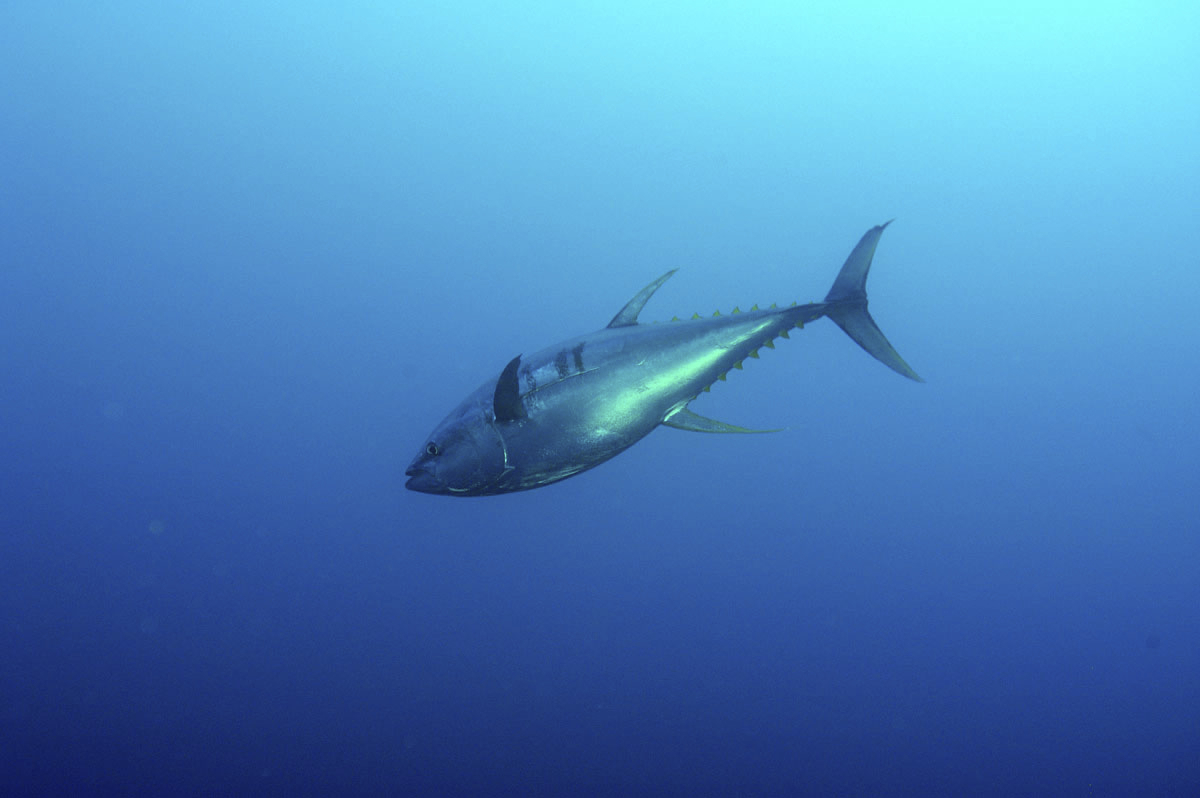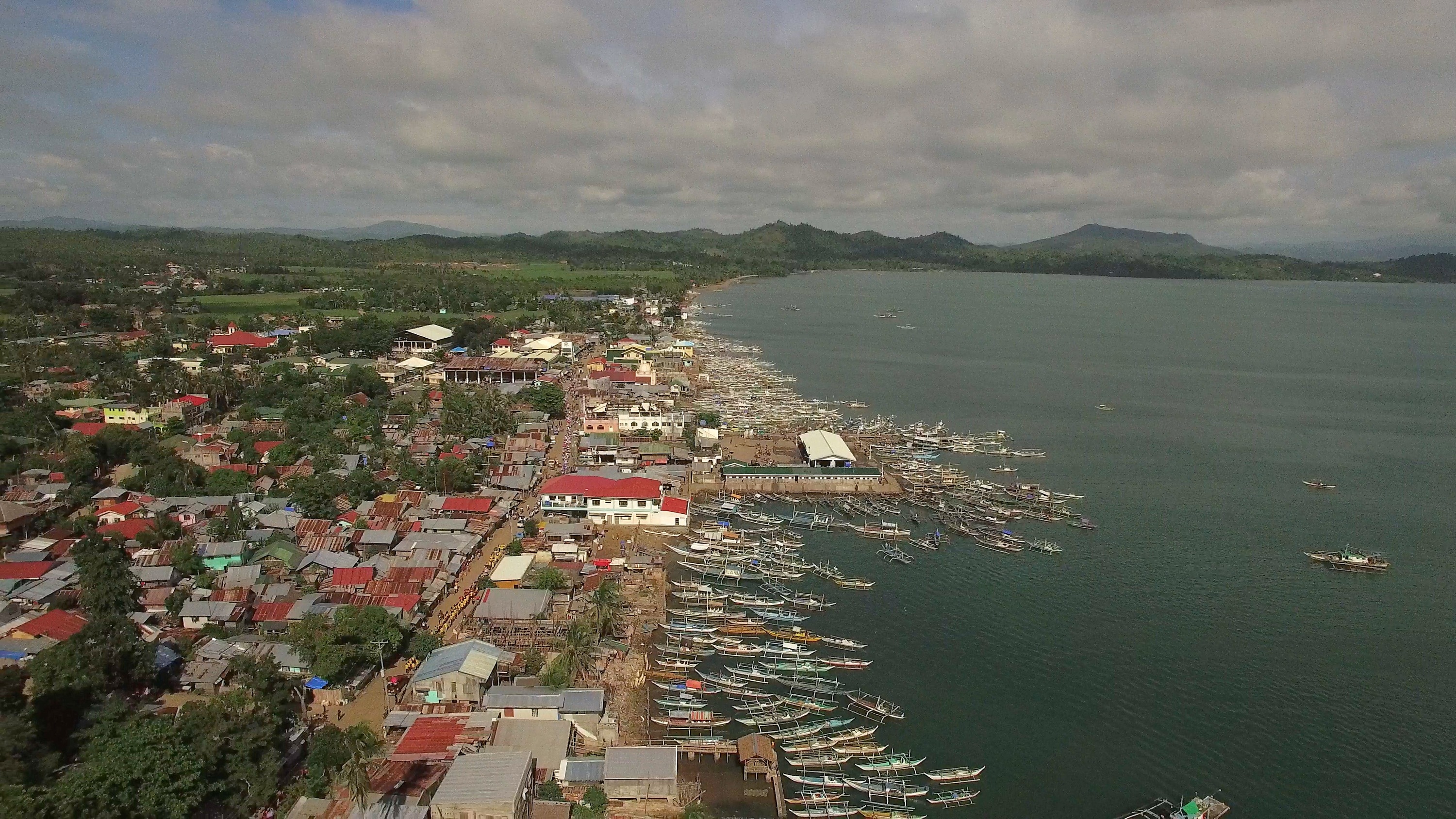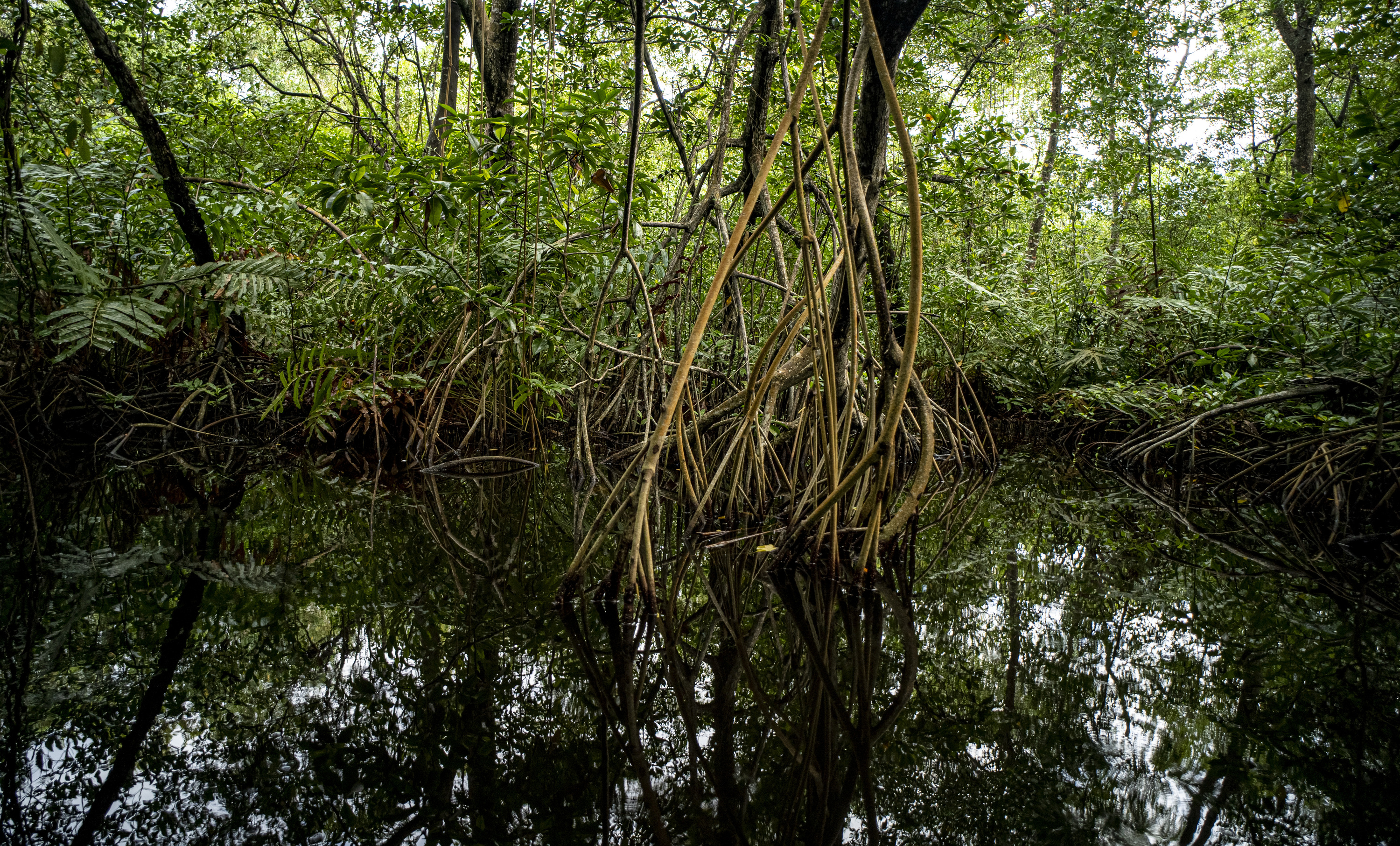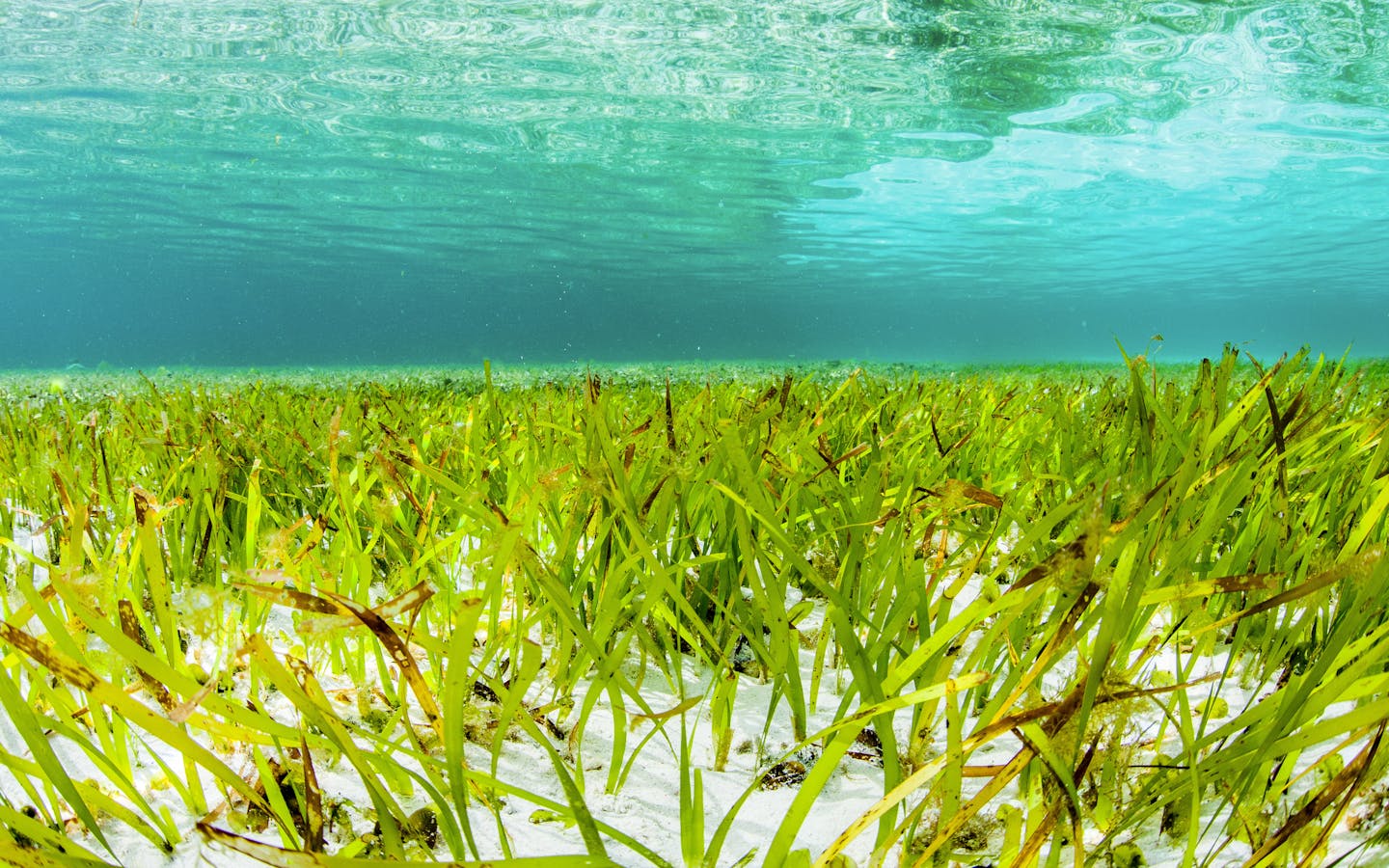Coastal ecosystems — including mangroves, seagrasses and tidal marshes — are some of the most valuable ecosystems on Earth, offering innumerable benefits to the climate, people and nature.
Climate
Coastal wetlands sequester and store vast amounts of what is known as “blue carbon.” In fact, in a single square mile, mangroves hold as much carbon as the annual emissions of 90,000 cars. However, when these ecosystems are degraded or destroyed large amounts of blue carbon are released into the atmosphere, accelerating climate change.
Community
Mangrove forests and other blue carbon ecosystems protect hundreds of millions of people worldwide by providing natural buffers against sea-level rise, storm surges and erosion. They play a critical role in improving and maintaining water quality and provide habitats for fish, which are essential to the food security and incomes of millions.
Nature
Blue carbon ecosystems, encompassing mangroves, seagrass beds, and salt marshes, are indispensable in preserving biodiversity, offering vital habitats for a myriad of species, including fish such as snook and red drum, crustaceans like blue crabs, nesting grounds for sea turtles, and migratory stopovers for waterfowl like herons and egrets.
But blue carbon ecosystems are at risk:
How we protect blue carbon
For over 15 years, Conservation International has been at the forefront of researching, protecting and conserving blue carbon ecosystems. Together with our partners, we are developing the strategies and tools needed to protect and fully-value coastal ecosystems — and equipping governments to develop policies that protect blue carbon ecosystems and promote their potential for supporting climate change adaptation and resilience.
Partnerships
We believe partnerships — big and small, public and private — are essential to the growth and success of blue carbon as a climate mitigation and adaptation tool. Conservation International leads and engages with a robust, multi-disciplinary network of partners through the following initiatives:
The Blue Carbon Initiative — This initiative brings together governments, research institutions and non-governmental organizations from around the world to advance the management approaches, financial incentives and policy mechanisms needed to ensure the conservation, restoration and sustainable use of blue carbon ecosystems as tools for climate change mitigation and adaptation. Learn more.
The Global Mangrove Alliance — An initiative to halt loss, restore half of recent loss and double protection of mangroves globally by 2030. Since its launch in 2018, the Global Mangrove Alliance has worked to implement a comprehensive and coordinated approach to mangrove conservation and restoration at an unparalleled scale. Learn more.
The International Partnership for Blue Carbon — A 54-member strong network supporting countries in protecting their blue carbon ecosystems through learning and knowledge-sharing. The partnership provides a forum for governments, non-governmental organizations, intergovernmental organizations and research institutions to connect, share and collaborate to build solutions, take actions, and benefit from the experience and expertise of the global blue carbon community. Learn more.
The Blue Carbon Buyers Alliance and Blue Carbon Suppliers Alliance — These groups coordinate buyers and suppliers committed to funding or purchasing credits from high-quality blue carbon projects, and assist capital providers in understanding where their support would be most impactful. Learn more.
Knowledge and tool building
Conservation International and our partners are building a robust, scientific basis for effective blue carbon policy, financing and management. We work with global experts to develop and synthesize knowledge for standards and tools needed to realize on-the-ground impact.
- In partnership with the government of Singapore and others, Conservation International launched the International Blue Carbon Institute, which focuses on developing global blue carbon knowledge and building the capacity to scale blue carbon projects. The institute plays a vital role in effectively translating cutting-edge science into practical tools and methodologies that are harnessing the potential of blue carbon for climate action.
- Conservation International coordinates the International Blue Carbon Scientific Working Group, an expert group that is advancing essential science for blue carbon. In 2014, the working group developed the Blue Carbon Field Manual, which provides standardized recommendations for carbon measurements and analysis and is translated into Spanish and Mandarin. The working group also co-founded the Coastal Carbon Research Coordination Network to share knowledge on ecosystem processes and carbon cycling in coastal wetlands globally.
Creating innovative funding mechanisms
In close partnership with local communities and governments, Conservation International implements blue carbon projects and financing approaches that are tailored to achieve long-lasting benefits for climate, people and nature.
- At the 2022 United Nations Climate Change Conference, Conservation International and a global coalition of ocean leaders launched the High-Quality Blue Carbon Principles and Guidance. Informed by our experience in pioneering global high-quality blue carbon credits, this first-of-its-kind resource is designed to guide the development and purchasing of high-quality blue carbon projects and credits.
- In 2018, Conservation International and partners launched a blue carbon crediting project on Colombia’s Caribbean coast that fully measures and monetizes the carbon stored by a 11,000-hectare (27,000-acre) mangrove forest. The carbon stores were fully certified in 2021 using the Climate, Community & Biodiversity Standards developed by Verra. The vast majority of revenues — 92 percent — generated from the sale of blue carbon credits is invested in Cispatá Bay’s conservation management plan to protect the mangroves and support the sustainable livelihoods of the 12,000 people who live near the project site. Critically, Vida Manglar provided proof of concept to bring blue carbon markets to scale, with Colombia’s government seeking to replicate this project elsewhere and six other countries exploring similar projects.
Accelerating global policy action for blue carbon
Conservation International works at all levels of government to help create and strengthen policies needed for the effective, long-term conservation and restoration of coastal blue carbon ecosystems.
- Countries all around the world are committed to combating climate change and its impacts. Increasingly, the conservation and restoration of coastal blue carbon ecosystems is being recognized as a high-impact mechanism for countries to reach their
individual and collective climate mitigation and adaptation goals.
Approximately 151 countries contain at least one blue carbon ecosystem, and roughly one-third of all countries contain all three — mangroves, seagrasses and tidal marshes. However, less than half of these countries have integrated blue carbon ecosystems in their climate mitigation commitments under the Paris Climate Agreement, leaving significant untapped potential. - The 195 signatories of the Paris Agreement are required to submit plans for reducing emissions through a mechanism called Nationally Determined Contributions (NDCs). As each country’s NDCs are updated every five years, it is crucial that governments are equipped with all the newest, science-backed information necessary to increase the ambition of their plans. Conservation International and our partners published Guidelines for Blue Carbon and Nationally Determined Contributions to advise countries on the ways coastal blue carbon ecosystems can contribute to achieving their national climate adaptation and mitigation goals. We have worked with the governments of Colombia, Costa Rica, Kenya, Liberia and Madagascar to include blue carbon commitments in their NDCs — and many other countries are following their example.
- Conservation International and the International Union for Conservation of Nature (IUCN) developed an International Policy Framework for Blue Carbon Ecosystems, which details how blue carbon ecosystem conservation and restoration can be accelerated and strengthened by aligning international polices across the United Nations Framework Convention on Climate Change (UNFCCC), the Sustainable Development Goals and other UN-level goals. The framework seeks to raise countries’ ambitions for protecting their blue carbon ecosystems, accelerate project implementation and align on how collective impacts are measured. We also work with our partners to maintain a Blue Carbon Policy Hub that contains framework updates and a library of policy guidance documents.
On the ground
Blogs about 'blue carbon'
What on Earth is ‘climate adaptation’?
Editor’s note: From “blue carbon” to “ecosystem services,” environmental jargon is everywhere these days. Conservation International looks to make sense of it in an occasional explainer series we’re calling “What on Earth?"
In this installment, we explore “climate adaptation” and some of the ways communities are responding to intensifying climate impacts.
What is ‘climate adaptation’?
It’s how communities and nations are adjusting to the many ways in which climate change is altering our lives.
Wait — shouldn’t we focus our time and energy on ending climate change rather than adapting to it?
You have a point; there is still time to prevent runaway climate change by drastically cutting carbon emissions. But millions of people around the world are already suffering the effects of a rapidly warming planet. Just look at the headlines: devastating hurricanes in the United States, enduring droughts from China to Europe, and record-breaking heat waves in the United Kingdom. Research shows that warming temperatures caused by climate change are even fueling locust outbreaks from Kenya to Pakistan and India.
Climate change has become the single largest health threat facing humanity — we need to start adapting. Let’s bring in an expert in to explain.
“Climate change isn’t a next decade problem — it’s happening right now,” said Giacomo Fedele, who leads Conservation International’s climate adaptation work. “Some of the most vulnerable people around the world are struggling to survive — including poor communities, ethnic minorities, migrants and displaced people.
It sounds like you’re describing the apocalypse.
Not quite, but it is a serious problem for many people, especially in developing countries. Let’s take the tropics where a Conservation International study found that 1.2 billion people are highly dependent on nature for their survival. Many of these communities are the least to blame for climate change but face the greatest risks because they rely so heavily on natural resources for their livelihoods, housing materials and other basic needs.
- FURTHER READING: New map pinpoints where people depend on nature the most
“As climate change degrades nature, these communities are left with fewer and fewer resources to live off of,” said Fedele, who led the study. “While global warming is a world-wide phenomenon, its impacts are felt unevenly across communities and countries.”
For example, Pacific Island nations like Palau and Fiji — which are collectively responsible for less than 1 percent of global emissions — already face some of the most severe impacts of climate change. Ocean warming is causing tuna to move outside the jurisdictions of these islands. Already, they have seen a steep decline in tuna catches. If this trend continues, it could add up to $140 million in losses each year by 2050 — costing some Pacific governments up to 17 percent of their annual revenues, according to Conservation International research.

Eastern Pacific yellow-fin tuna. © Conservation International/photo by Sterling Zumbrunn
You’ve officially convinced me that it’s time to fight climate change and adapt to it. Now how do we do that?
There are many ways to adapt to climate impacts; they vary based on geographic, socioeconomic, cultural or political conditions. Some fixes involve creating infrastructure, like seawalls and raised homes, that help flood- prone areas become resilient to climate change. Or developing technology, such as early warning systems that can alert communities to cyclones so they can evacuate. Or planting drought-resistant crops.
There’s no one-size-fits-all approach to climate adaptation. But across the board, nature is one of our greatest — and often overlooked — allies.
Wait, didn’t you just tell me that people who rely on nature are the most vulnerable to climate impacts?
Yes, but many communities are using nature sustainably to adapt to climate impacts like flooding, droughts and more.
Give me an example.
Sure — let’s take the municipality of Concepcion in the central Philippines. In 2013, a devastating typhoon hit the region, destroying homes and taking more than 6,000 lives.
To help communities fortify themselves against rising seas and future storms, Conservation International worked with the Philippine government and partners on a hybrid approach that combines mangrove restoration with conventional engineering — such as breakwaters or seawalls — to manage floods, protect coastlines and control erosion. This approach, known as “green-gray” infrastructure, works with nature, not against it. Mangroves are used as a first line of defense in tandem with built structures.
“As a community, we were not ready for climate emergencies,” said Vivian Amasan, a member of the local Bagongon Fisherfolks Association. “The green-gray approach is preparing us to face the challenges climate change will bring.”

Fishing town of Concepcion, Iloilo in the Philippines, 2016. © Conservation International/photo by Tim Noviello
Why mangroves?
Mangroves create a natural buffer against rising seas or storm surge. Globally, they provide coastal communities with an estimated US$ 82 billion in flood risk prevention each year. As a bonus, a single square mile of mangroves can stash away as much climate-warming carbon as the annual emissions of 90,000 cars — helping communities adapt to the climate crisis while fighting it.
To help fund mangrove restoration, Conservation International is tapping into blue carbon credits — that is, verifiable emissions reductions tied to carbon stored in marine ecosystems. On Colombia’s Caribbean coast, a project spanning 11,000 hectares (27,000 acres) of mangroves is the first to fully measure — and monetize — blue carbon. The first batch of credits sold out this year, with the vast majority of revenues — 92 percent — invested in the region’s conservation management plan to protect mangroves and support the livelihoods of 12,000 people who rely on them.
“Among the many solutions nature offers to confront climate change, mangroves are a standout,” said María Claudia Díazgranados, director of Conservation International’s blue carbon project. “They provide a protective barrier for coastal communities, lock away large amounts of carbon and can generate long-term revenues for communities via carbon credits — a triple win.”

Cispata Bay mangroves from the Vida Manglar project in Colombia. ©Daniel Uribe
Is it just mangroves that can help?
No — there are many ways that nature can help people adapt to climate impacts: Coral reefs, salt marshes and seagrasses all play a role in absorbing and storing carbon while acting as natural barriers against storm surge. Forests can help regulate waterflows to prevent droughts, provide shade during heatwaves and protect against landslides. Restoring floodplains to accommodate heavy rains can keep communities safe from flooding.
But if climate change continues to accelerate, more radical approaches to climate adaptation will be required.
What do “more radical approaches” look like?
Rather than implementing temporary fixes like seawalls, communities might need to make transformative shifts — that is, more fundamental changes that address the root causes of vulnerability to climate impacts.
“Climate change is already affecting everybody’s life somehow, and we need to change the way we behave,” said Fedele, who led a study exploring how governments can make transformative changes. “We have been taking steps to reduce our vulnerabilities, but they’re mostly reactive. Now is the time to be proactive.”
- FURTHER READING: Climate breakdown is here. It’s time to adapt. But how?
Consider an area that experiences a flood exacerbated by climate breakdown. The flood-stricken community might borrow money to repair homes and replant crops — but that might not be enough to weather future floods.
A transformative adaptation would involve relocating homes to safer areas or restoring previously degraded wetlands upstream to prevent flooding. In other words, coping strategies that anticipate climate threats.
That sounds incredibly difficult. What can governments do to help?
Developed countries have a major role to play in helping developing nations deal with the impacts of climate change like rising sea levels and extreme weather. They must ensure those nations receive more technical and financial support to implement robust national adaptation plans that harness nature’s ability to reduce climate risks. In fact, when the Paris Agreement was signed seven years ago, countries pledged to raise US$ 100 billion a year to subsidize climate adaptation.
That’s a step in the right direction.
Yes, but the money has fallen far short of what was promised and developing countries are struggling to adapt to the climate impacts fueled by wealthier nations.
“Wealthy nations need to step up and make good on past promises to scale up funding for climate adaptation in developing countries, especially for Indigenous peoples and local communities, who know how to work with nature to reduce climate vulnerabilities,” Fedele said. “These investments have the potential to help make developing nations more climate resilient and reduce their reliance on carbon-intensive industries such as coal mining and oil.”
The good news: At U.N. climate conferences, world leaders are increasingly discussing climate change adaptation needs and how to increase climate financing.
This year, at the climate conference in Sharm el-Sheikh, Egypt, the focus will be on delivering climate adaptation actions, including the need for new financial resources and arrangements to help developing countries adapt to the already unavoidable impacts of climate change. Countries will also discuss what a global goal on adaptation could look like.
“We don’t have any more time to waste when it comes to getting climate adaptation right,” Fedele said. “This doesn’t mean we are giving up the fight to end climate change. Quite the opposite; it means that we are making sure the people on the front lines of this fight are equipped with the resources they need to thrive.”
Resources & publications
- High-Quality Blue Carbon Principles and Guidance (PDF)
- International Policy Framework for Blue Carbon Ecosystems
- Blue Carbon Policy Hub
- Guidelines for Blue Carbon and Nationally Determined Contributions
- Blue carbon pathways for climate mitigation: Known, emerging, and unlikely (ScienceDirect)
- Carbon sequestration and climate change mitigation using macroalgae: a state of knowledge review (Biological Reviews)
- The Ocean as a Solution to Climate Change: Updated Opportunities for Action (Ocean Panel)
- Blue Carbon Handbook — A guide to managing blue carbon ecosystems as a nature-based solution for supporting sustainable development. (Ocean Panel)


Leave a comment